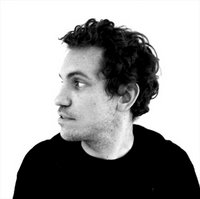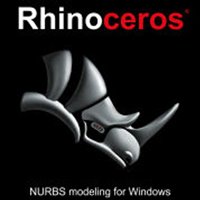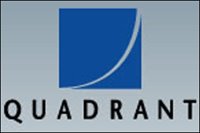080114_Boolean_Series002
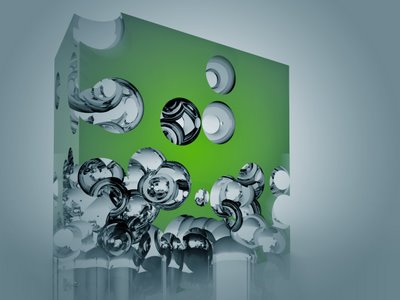
Since my very traditionalist architectural educational background in France - the Sphere has been unfortunatly very early on associated my history & theory course and french Neo-classical (though utopist) architects such as "Nicolas Ledoux" - and therefore temporally banished from my formal language ever since; so what is it that suddenly brings it back? was it the Star Wars "baby boom"? is it Rem Koolhaas and his (re-)recent fascination for the icone as primitives like in his recent proposal for the Ras al Khaimah Convention and Exhibition Centre in the UAE?
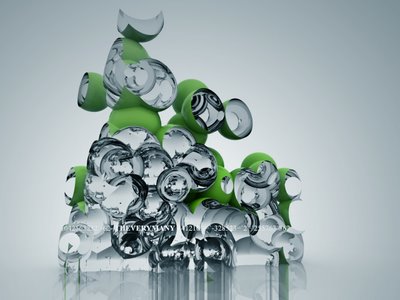
PROTOCOL:
- pick a closed surface or polysurface
- plot random points within that solid
- assign a sphere to each of the points; its radius being either the same for each or weighted according to the color of the point
- for every point boolean its sphere with his neighbours
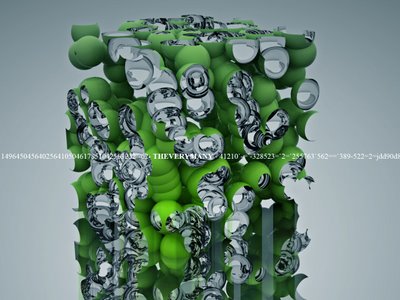
"SIDE TRACK" : ELEVEN PROPERTIES OF A SPHERE (ie wikipedia.org)
In their book Geometry and the imagination David Hilbert and Stephan Cohn-Vossen describe eleven properties of the sphere and discuss whether these properties uniquely determine the sphere. Several properties hold for the plane which can be thought of as a sphere with infinite radius. These properties are:
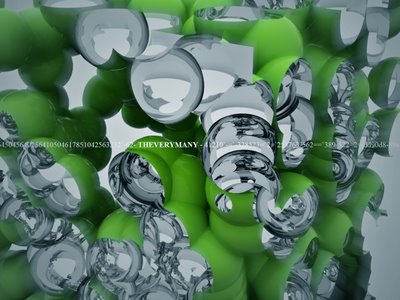
The points on the sphere are all the same distance from a fixed point. Also, the ratio of the distance of its points from two fixed points is constant.
The first part is the usual definition of the sphere and determines it uniquely. The second part can be easily deduced and follows a similar result of Apollonius of Perga for the circle. This second part also holds for the plane.
The contours and plane sections of the sphere are circles.
This property defines the sphere uniquely.
The sphere has constant width and constant girth.
The width of a surface is the distance between pairs of parallel tangent planes. There are numerous other closed convex surfaces which have constant width, for example Meissner's tetrahedron. The girth of a surface is the circumference of the boundary of its orthogonal projection on to a plane. It can be proved that each of these properties implies the other.
A normal vector to a sphere, a normal plane and its normal section. The curvature of the curve of intersection is the sectional curvature. For the sphere each normal section through a given point will be a circle of the same radius, the radius of the sphere. This means that every point on the sphere will be an umbilical point.
All points of a sphere are umbilics.
At any point on a surface we can find a normal direction which is at right angles to the surface, for the sphere these on the lines radiating out from the center of the sphere. The intersection of a plane containing the normal with the surface will form a curve called a normal section and the curvature of this curve is the sectional curvature. For most points on a surfaces different sections will have different curvatures, the maximum and minimum values of these are called the principal curvatures. It can be proved that any closed surface will have at least four points called umbilical points. At an umbilic all the sectional curvatures are equal, in particular the principal curvature's are equal. Umbilical points can be thought of as the points where the surface is closely approximated by a sphere.
For the sphere the curvatures of all normal sections are equal, so every point is an umbilic. The sphere and plane are the only surfaces with this property.
The sphere does not have a surface of centers.
For a given normal section there is a circle whose curvature is the same as the sectional curvature, is tangent to the surface and whose center lines along on the normal line. Take the two center corresponding to the maximum and minimum sectional curvatures these are called the focal points, and the set of all such centers forms the focal surface.
For most surfaces the focal surface forms two sheets each of which is a surface and which come together at umbilical points. There are a number of special cases. For canal surfaces one sheet forms a curve and the other sheet is a surface; For cones, cylinders, toruses and cyclides both sheets form curves. For the sphere the center of every osculating circle is at the center of the sphere and the focal surface forms a single point. This is a unique property of the sphere.
All geodesics of the sphere are closed curves.
Geodesics are curves on a surface which give the shortest distance between two points. They are generalisation of the concept of a straight line in the plane. For the sphere the geodesics are great circles. There are many other surfaces with this property.
Of all the solids having a given volume, the sphere is the one with the smallest surface area; of all solids having a given surface area, the sphere is the one having the greatest volume.
These properties define the sphere uniquely. These properties can be seen by observing soap bubbles. A soap bubble will enclose a fixed volume and due to surface tension it will try to minimize its surface area. Therefore a free floating soap bubble will be approximately a sphere, factors like gravity will cause a slight distortion.
The sphere has the smallest total mean curvature among all convex solids with a given surface area.
The mean curvature is the average of the two principal curvatures and as these are constant at all points of the sphere then so is the mean curvature.
The sphere has constant positive mean curvature.
The sphere is the only surface without boundary or singularities with constant positive mean curvature. There are other surfaces with constant mean curvature, the minimal surfaces have zero mean curvature.
The sphere has constant positive Gaussian curvature.
Gaussian curvature is the product of the two principle curvatures. It is an intrinsic property which can be determined by measuring length and angles and does not depend on the way the surface is embedded in space. Hence, bending a surface will not alter the Gaussian curvature and other surfaces with constant positive Gaussian curvature can be obtained by cutting a small slit in the sphere and bending it. All these other surfaces would have boundaries and the sphere is the only surface without boundary with constant positive Gaussian curvature. The pseudosphere is an example of a surface with constant negative Gaussian curvature.
The sphere is transformed into itself by a three-parameter family of rigid motions.
Consider a unit sphere place at the origin, a rotation around the x, y or z axis will map the sphere onto itself, indeed any rotation about a line through the origin can be expressed as a combination of rotations around the three coordinate axis, see Euler angles. Thus there is a three parameter family of rotations which transform the sphere onto itself, this is the rotation group, SO(3). The plane is the only other surface with a three parameter family of transformations (translations along the x and y axis and rotations around the origin). Circular cylinders are the only surfaces with two parameter families of rigid motions and the surfaces of revolution and helicoids are the only surfaces with a one parameter family.
Labels: rhinoscripting, rhinscript, Sphere, spheres
